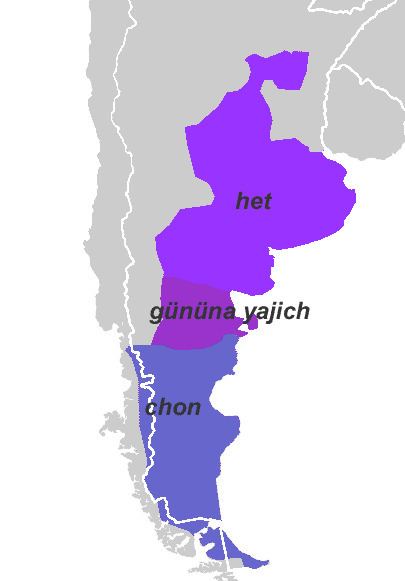Extinct 19th century Glottolog quer1237 (Querandi) | Ethnicity Querandí etc. ISO 639-3 None (mis) | |
 | ||
Language family Unclassified;possibly Het or Chonan | ||
The Het were the people of the northern Patagonian pampas west of the Paraná River: The Chechehet, the Diuihet AKA Didiuhet, and the Taluhet. The easternmost Didiuhet, near modern Buenos Aires and influenced by the Guarani, were called the Querandí (see). It is not clear if these three peoples were related linguistically or only culturally.
The Het were neighbored on the north by the Chaná, on the northwest and west by the Mapuche, and on the south by the Puelche.
From north to south, the Het peoples were,
Language
The Het population was decimated by the end of the eighteenth century by epidemics, which facilitated the Mapuche absorption of its territory and its survivors rapid Araucanization at the cultural level that consolidated them into the Puelche. For this reason it is today difficult to find evidence of the Het languages. Of Querandí (Diuihet) we only have two sentences and a few words, recorded by French sailors around 1555. Based on this admittedly inadequate data, Viegas Barros showed that Querandí may have been closely related to Puelche. Viegas Barros (2005) further attempted to demonstrate that Puelche is more distantly related to the Chon languages to its south.
